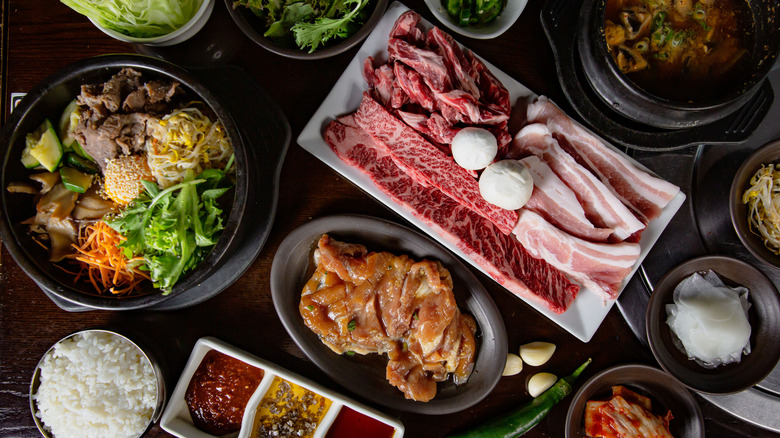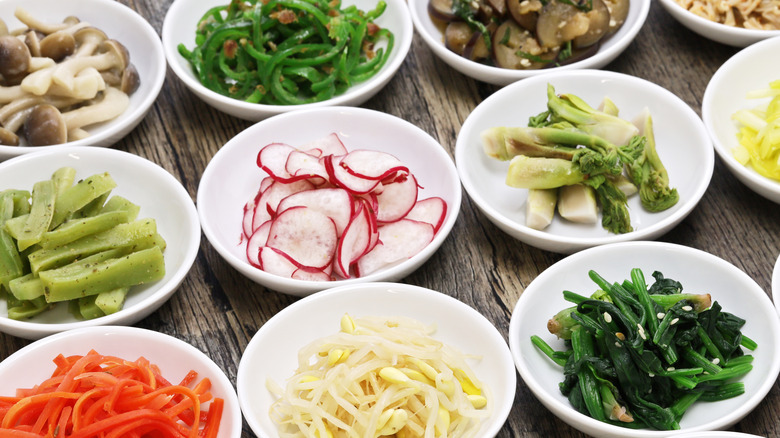The Royal Origins Of Korean Barbecue
In the last two decades Americans have embraced Korean barbecue — in all its iterations — as dearly as most other forms of meat cooked over fire. The stateside popularity of this cuisine can be attributed to a few factors, including the rise of hallyu, a term describing the popularity of Korean culture in the 1990s and 2000s. Innovative Korean American chefs such as Roy Choi and David Chang took classic dishes, like bulgogi and galbi, and wove them into the U.S. favorite-food fabric (think tacos and sliders). And in return we've shown much gratitude: Global Korean food exports exceeded $12.1 billion in 2023 (via The Korea Times).
But Korean barbecue didn't begin on the streets or in the backyard. Rather, it was the preferred cuisine of Korean royalty. Galbi and bulgogi originated from maekjeok, a dish of marinated beef dating back nearly 2,000 years. As variations of the dish were unveiled, the royals of the Joseon dynasty (1392 to 1910) were feasting on them with impunity. Elaborate meals featuring the barbecue became known as royal court cuisine, and the nobility could expect to be served meals five times a day.
The feasts involved a rich pageantry of different styles of hot pot, or side dishes, served along with the barbecue. These dishes were eventually referred to as banchan, an important part of the modern Korean barbecue experience. The most notable banchan is kimchi, the very stinky, very pungent, but surprisingly popular fermented cabbage dish. But there are others to try.
Korean barbeque accompaniments, from the palace to your plate
Banchan is found on all Korean tables, from the working class to the wealthy. During the feasts of the Joseons, a royal table would feature varying elements of banchan. Typically 12 dishes would be served, including soup, rice, kimchi, pancakes, vegetables, and fermented pastes. Royal cuisine was prepared using a variety of culinary techniques, such as fermentation and pickling, sauteeing, and steaming. Modern day Korean barbecue is still accompanied by this banchan; in addition to the ubiquitous kimchi, it usually includes namul muchim, or various root vegetables, either sauteed or pickled. Jeon are thinly fried pancakes served as a perfect starchy addition to barbecue. Kimchi jeon is a favorite among the savory pancakes, and pajeon comprises scallions, eggs, and vinegar, usually served with soy sauce.
Royal cuisine banchan was often seasonal and would feature a rotation of small dishes to appeal as much to the eye as to the palate. Today's Korean barbecue joints typically have some staples on the table, and offerings may include pickled daikon radish (danmuji), seaweed salad, potato salad, and soybean sprouts (kongnamul muchim). Piled onto bulgogi or rice, or eaten alongside galbi ribs, some form of sprouts is usually at the table, along with Korea's beloved kimchi. So, whether you're munching on a bulgogi taco from the food truck down the street, or grilling your own meat at the local Korean barbecue spot, you can truly say you are eating like a king.

